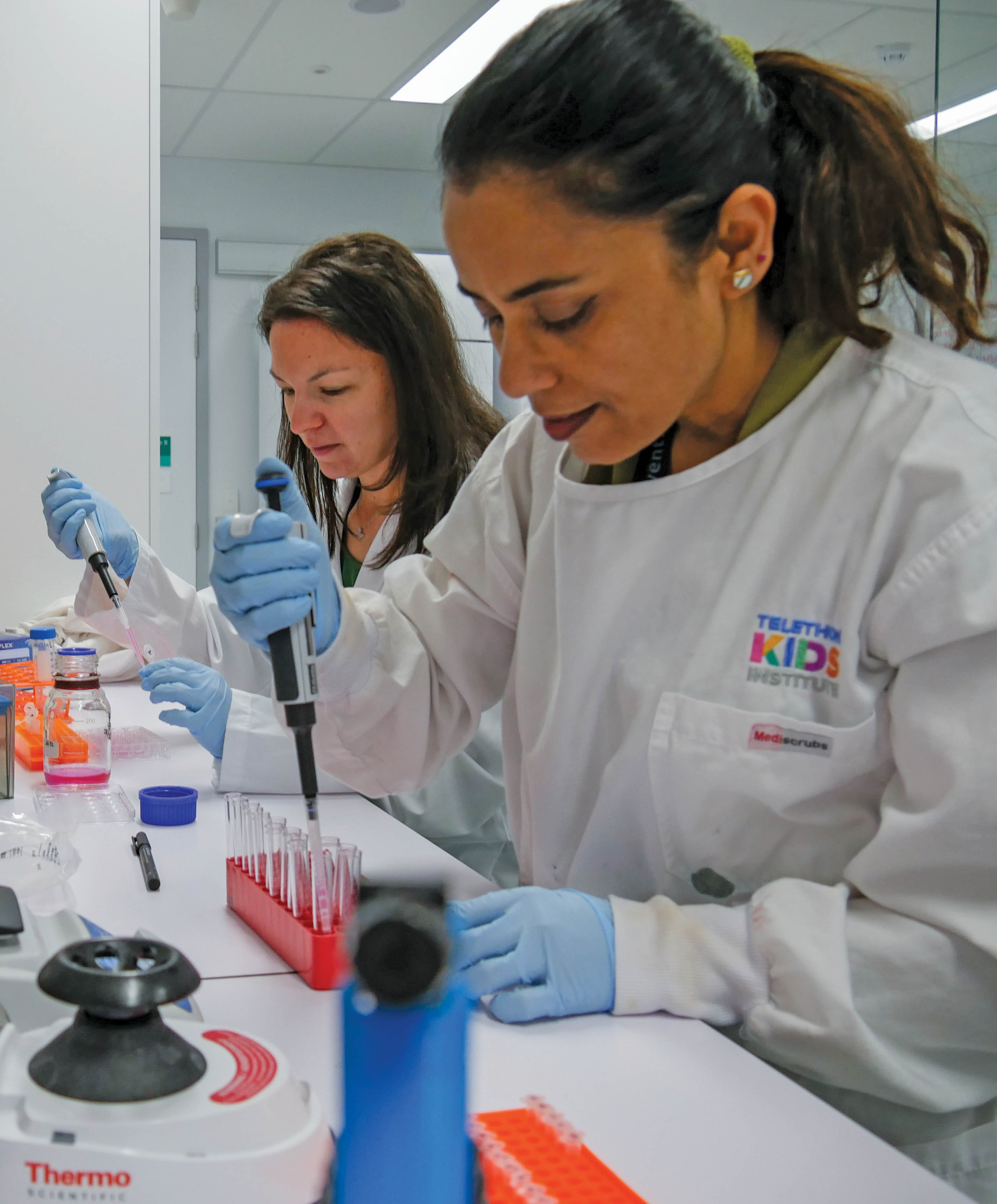Dr Joost Lesterhuis and his colleagues in the Sarcoma Translational Research Team are working on an immunotherapy gel that could be applied directly to the tumour during surgery.

“So we’re developing a gel that the surgeon can apply during surgery and then close the wound and the patient goes home.
“Then over the course of days or weeks, the gel releases this immunotherapy into the wound area and activates an immune response. The immune cells can then mop up any remaining cancer cells.”
A type of immunotherapy known as cellular therapy has already seen some success in treating children with leukaemia. It involves genetically engineering the patient’s own immune cells in the lab to specifically target the cancer and growing them to an army of millions, before putting them back into the patient to travel around their body and fight the cancer cells.
Dr Bree Foley and the Centre’s Cancer Immunotherapy Team are working to fast-track this process by using healthy adult donor cells instead.

“It’s definitely the next big hope in cellular therapy because it can be taken from healthy people and given to patients.”
Finding safer treatments for children with cancer is what drives Dr Raelene Endersby, Co-head of the Brain Tumour Research Team.

“Treatments like radiation therapy and chemotherapy are very damaging to the normal cells in the brain that are left behind once the tumour has been eradicated.
“So we need to find more treatments that are safer and less toxic for children.”
For Professor Terrance Johns, driving a whole-of-centre focus on immunotherapy is a challenge he knew he needed to take on.

“There’s certainly no one in Australia working on immunotherapy in children and while there are individual groups working in this area overseas, there is not a comprehensive cancer centre with an underpinning focus on immunotherapy in children.”
Cancer is still the leading cause of death by disease for Australian children. For our dedicated team of researchers, the stakes couldn’t be higher.
 The
The